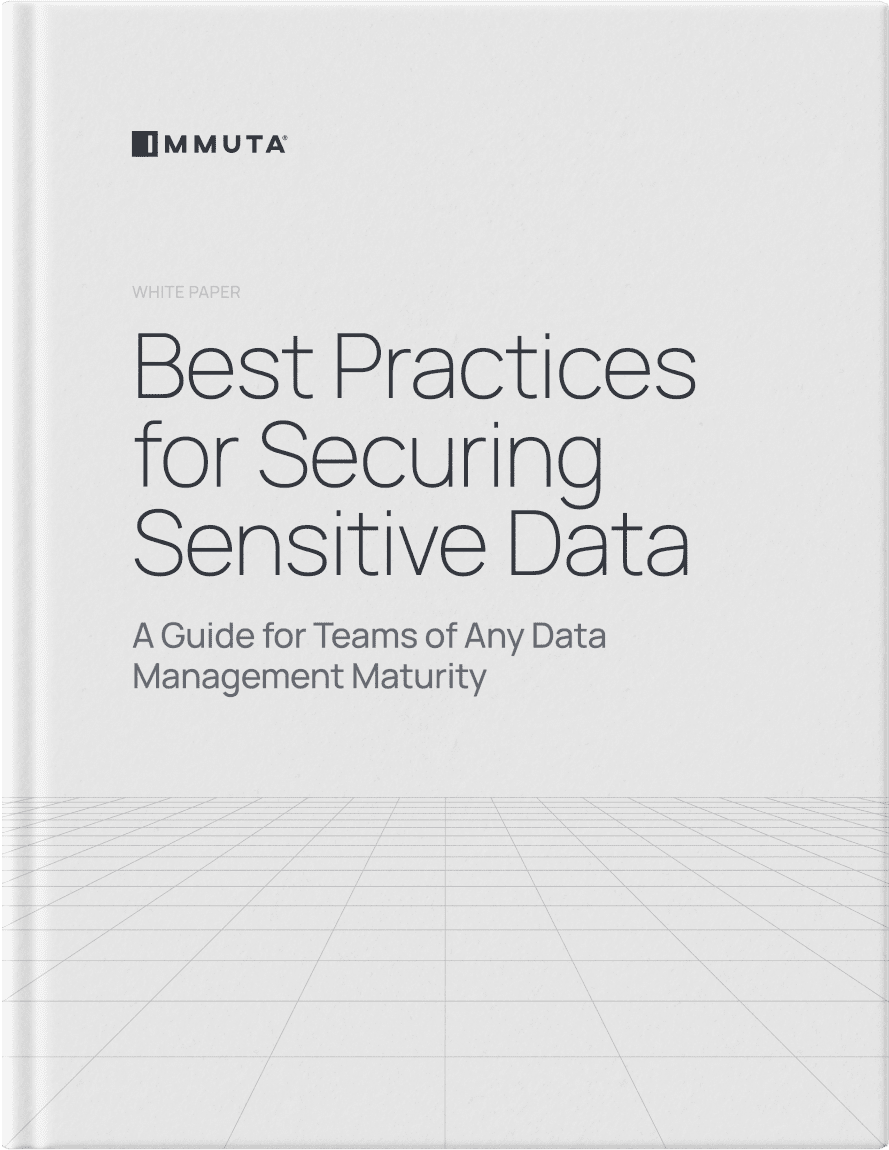The most important part is to have a data-driven organization where everyone buys into a culture of using data for business decisions…Data democratization will play a key role in this setup.”
Vineeth Menon, Head of Data Lake Engineering, Swedbank
As data is being analyzed in new ways to deliver better insights, organizations across industries are focusing on democratizing its use in order to capitalize on its business-driving capabilities. In fact, one survey found that 90% of data professionals are prioritizing data democratization at their companies. This sentiment is also present in our 2023 Data Access & Security Trendbook, where experts shared thoughts such as:
With the growing popularity of data democratization, what kind of impacts can organizations expect it to have on their data practices and business success? In this blog, we’ll define data democratization, examine its pros and cons, and underscore its central role in the evolution of data use.
What is Data Democratization?
Data democratization is the process of enabling easy, scalable data access to more users regardless of their role. It is designed to eliminate complicated frameworks and bottlenecks in the data access pipeline by widening the range of stakeholders who use data to enhance their day-to-day work.
Consider a local library: it’s a repository of information that is available to both readers and other libraries through a network of lending. As long as they have a library card, residents can borrow any book they desire.Now, imagine that only the librarians had permission to enter the building and take out books. All requests would need to go through these gatekeepers, and it would make borrowing books a time consuming and arduous process.
Democratizing data access is like providing library cards for each of your organization’s data users. There should still be restrictions on the type of information they can access, but the ability to have self-service access to data is universal.
Pros and Cons of Data Democratization
Moving away from a centralized framework and towards democratization can have positive and negative impacts on your organization’s data practices. These include:
Pros:
- Enhanced Accessibility: When data access is democratized, it expands access while streamlining the process for all stakeholders. Traditionally, access requests have been routed through IT teams for approval, creating a bottleneck and delaying efficient access for users. Democratization promotes self-service access, making it easier for data users to get a hold of the resources they need when they need them and shortening time-to-data significantly.
- Improved Performance: When teams take action based on data, it leads to improved team performance and results. According to Forrester, insights-driven businesses “are eight times more likely to say they grew by 20% or more than beginner firms.” The more users who are able to derive insights using data, the more informed decisions can be made.
- Employee Enablement: Democratized data use can vastly improve job performance, eliminating cumbersome duties for system admins and governance teams while simultaneously producing better results for data users. Streamlining the access process can lead to higher job satisfaction and heightened productivity across teams.
Cons:
- Increased Risk: The more users with access to data, the more inherent risk there is to both data privacy and data security. The attack surface is broadened, and there are more points at which either an intentional external party or non-intentional internal threat could allow access through a data leak, breach, or other sort of attack. This necessitates a higher standard of security to protect your organization’s sensitive data.
- Less Visibility: When more users have access to data, it can become harder to track who is doing what with which information. This makes it more difficult to keep data safe, as increased access without proper data monitoring leads to unsupervised activity across the data ecosystem.
- Data Silos: There is a danger that users may access and store data in places other than the secure, IT-sanctioned platforms. Think about the library example–would it be smart for someone to take out a handful of books and decide to keep them in their own personal library instead of returning them? This would make the books harder for others to access, and increase the risk that they are lost or damaged.
Data Democratization in Modern Tech Stacks
Democratization is a relatively broad concept. Sure, you’d like to give users easier access to more data–but how is this self-service access being achieved? These are some of the most common methods today’s data teams are using to democratize data access:
Dynamic Data Access Controls
Traditional data access control methods, often tied to legacy platforms, are no longer the most efficient or practical choice. Take RBAC (role-based access control) for example: basing access decisions on static roles can work for a small number of users, but when an organization needs to scale, this method quickly becomes unmanageable. Roles must be predetermined, and each has its own unique access policies that must be manually written and applied. The more data users and user types, the more likely teams are to experience role bloat and policy explosion.
[Read More]: GigaOm Report & Webinar: The Advantage of ABAC Over RBAC
To avoid the complications of outdated methods like RBAC, teams are turning to future-oriented access methods like attribute-based access control (ABAC) instead. ABAC policies determine access based on a range of dynamic attributes, including job title, department, and location. Since decisions are made at query time rather than being based on predetermined roles, there is more freedom to adjust user permissions on the fly and scale with a growing organization. This gives teams the flexibility to provide more access to more users–without worrying about lapses in security.
Data Mesh
With users and data moving to the cloud and adopting the use of multiple platforms for self-service data use, having a centralized approach to access no longer makes sense. Streamlining and distributing access through democratization empowers the implementation of more flexible cloud-based architectures like the increasingly popular data mesh, an approach rooted in decentralization.
Data mesh architectures are built around principles that include:
- Domain-Centric Ownership: Domain ownership and management are given to the teams most closely associated with each respective data domain. This pivots away from centralized data ownership and access, instead placing the teams most closely tied to specific data the control over their access and use.
- Self-Service Platform: With domain-agnostic access and security measures, teams create a clearly defined and repeatable self-service data structure. This gives the power of data access to those who need it, removing the bottlenecks and other obstacles of centralized ownership and enabling streamlined and monitored data use.
By adhering to these principles, as well as maintaining a focus on data-as-a-product and federated governance, data mesh frameworks provide an opportunity to democratize data use to domain-based teams without damaging security or accessibility.
What Are the Effects of Data Democratization?
What kind of real-world benefits is data democratization having on modern organizations?
Faced with data access challenges and mounting on-premises costs, Swedbank recognized that migrating data to the cloud was key to building a scalable data infrastructure. As part of its migration effort, the bank wanted to build an enterprise analytics platform (EAP) that enabled secure and efficient access for a greater number of data users.
“It is absolutely important for any organization to build an easy-to-use platform with the capabilities various users require to scale analytics,” said Vineeth Menon, Head of Data Lake Engineering at Swedbank.
Upon successfully implementing the EAP and democratizing data access to more users, Swedbank achieved time savings and productivity improvements, including:
- 3x time saved setting up data security and self-service policy authoring
- 2x more data use cases
- 5x improvement in process efficiency
Another global bank needed to find a way to guarantee streamlined and secure real-time data access for over 5,000 analysts. Using their traditional manual approval processes, these analysts were losing roughly 35% of their time just waiting for data access. To remedy this, the bank needed to revitalize and democratize its data access process. By implementing sensitive data discovery and global fine-grained access control policies to democratize data use, the bank:
- Scaled self-service data access to 5,000+ users in just six months
- Automated 95% of data access control requests
- Saved more than $50M in required resources
Achieving Data Democratization at Scale
How are organizations like these achieving their data democratization goals without taking on excess risk or damaging their security and visibility? They are implementing platforms that distribute data access while maintaining robust security and consistent oversight across the data ecosystem.
The Immuta Data Security Platform helps data platform teams democratize data access by allowing them to discover, secure, and detect their sensitive data. Automated data discovery capabilities tag and classify data as it is added to the ecosystem, which in turn allows ABAC policies to be created to protect it–wherever it is being accessed. Continuous data monitoring and threat detection provide teams with a holistic view of the activity taken on their data.
These combined capabilities ensure that data users can be assigned the correct levels of access based on their attributes and monitored for any risky or anomalous behavior. When widespread data access and use are enabled in a secure and scalable manner, resources can be democratized and insights gathered in a more efficient manner organization-wide.
To learn more about how Immuta can help your team democratize data access at scale, schedule a demo with our team today.

Best Practices for Securing Sensitive Data
Discover which data security strategy is best for your needs.



